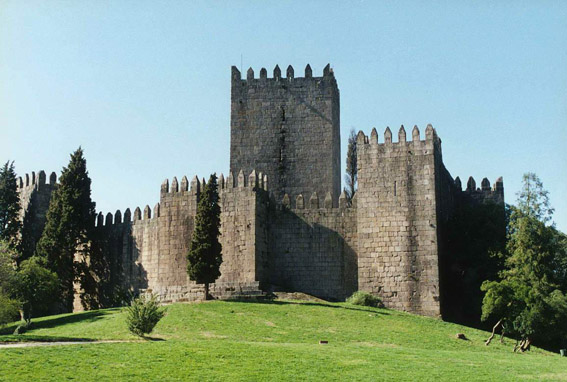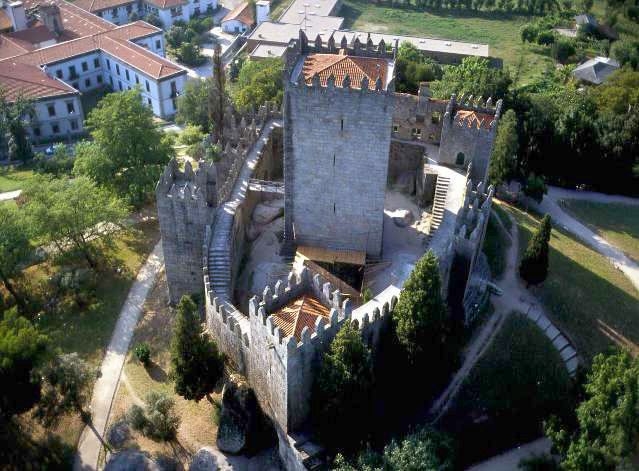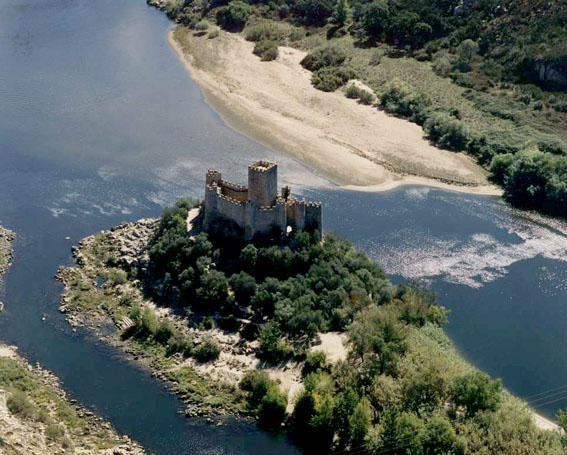|
In the Middle Ages, several castles were built in Portugal along the border with the kingdom of Leon and Castille, as well as in the moving frontiers with Arab-ruled regions. Many of these castles were built over structures dating from the Arab period or before. In the present-day buildings, however, there are few authentic remains dating from before the Christian reconquest. Some castles still have their cisterns from Arab times, like the ones in Sintra and Silves. Cisterns are underground water chambers which were crucial during a siege, allowing the defenders of the castle to have water at their disposal.
The city of Guimar�es was the capital of the ancient County of Portucale and is the place were Afonso Henriques, later king, was born and spent his childhood. The Castle of Guimar�es (photo below) is strongly linked to the birth of the country, although most of the present-day building dates from the second half of the 13th century, when it was renovated under King Dinis I. Its crenelated walls have eight cubic towers, and the massive tower in the centre of the courtyard is the keep (torre de menagem), which served as the main site to observe the surroundings and fire arrows over the castle walls. The keep was also the last line of defence of the castle, in case it was taken by the enemy. The keep was introduced in Portuguese architecture by the Templar Knights in the second half of the 12th century. |
|
|
The Castle of Almourol, located on an island of the Tagus river, is another archaetypical Portuguese castle. The castle was donated by King Afonso Henriques to the Templar Knights, who renovated it extensibly between 1161 and 1171 as part of a series of defensive castles along the Christian-Muslim border, which at the time corresponded roughly to the line of the Tagus. Almourol Castle is the set of several legends, and is inhabited by a giant in the romance of chivalry "Palmeirim de Inglaterra", written in the 16th century by Portuguese Renaissance writer Francisco de Morais. The castle has been partially renovated in the 19th century. |
|


